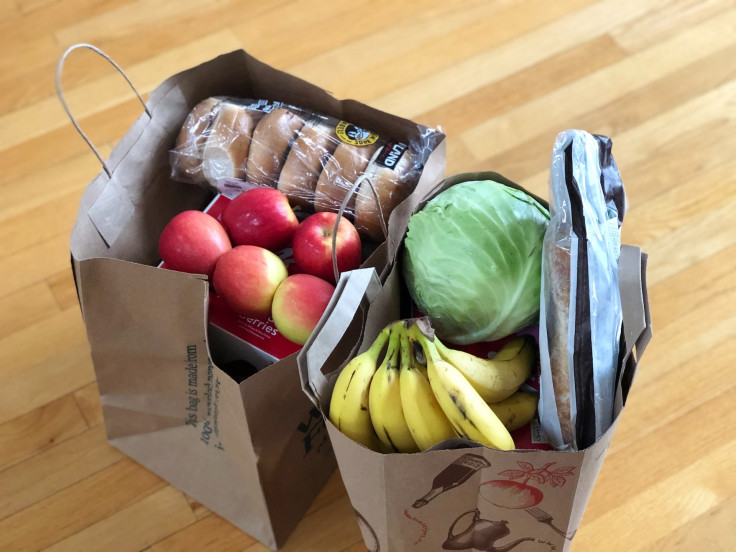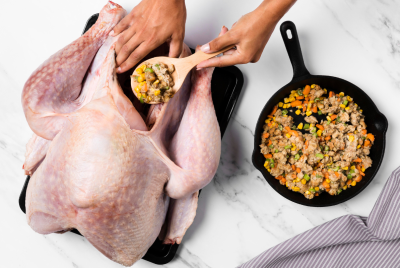More people are taking advantage of Buy Now Pay Later services
Recent data from Adobe Analytics shows the growth in the demand for online home furnishing and groceries shopping, by shoppers leveraging on Buy Now Pay Later.

The world's largest Digital Experience Conference, Adobe Summit, which took place two days ago, on March 22, revealed new US e-commerce insights into the latest changes in the Digital Economy.
The report shows the demand for online shopping for groceries and home furnishing has been impressive. Additionally, the data reveals the far-reaching effects of pandemic-related habits and also exposes segments that have struggled to gain traction in the past. However, the growing economic uncertainty is causing many shoppers to hold up in payment purchases by capitalising on Buy Now Pay Later (BNPL) options online.
On the other hand, a similar report says Britain is looking to regulate the Buy Now Pay Later options as they may pose potential harm to consumers.
The report provided by Adobe Analytics data gives the most extensive view into US e-commerce. It analyses transactions online, including over a trillion shoppers visiting the US retail sites, 18 product categories and 100 million SKUs. Adobe Analytics, a part of Adobe Experience Cloud, regarded by over 85 per cent of the highest 100 US internet retailers, is used for measuring, delivering and personalising users' online shopping experiences.
Last year, Adobe revealed that consumers disbursed £105.4 billion on groceries, a 10.8 per cent increase year-over-year (YoY), and over £105 billion on home furnishings, a 10.2 per cent increase YoY. This strong growth in both categories differs from the topmost category, electronics. The total spending of this category is £167 billion, but moderately increased by 4 per cent YoY. Comparably, apparel, being another major category, and driving £139.7 billion in 2022 spending, the number declined by 3.3 per cent YoY.
In February 2023, the groceries category increased significantly at 26.7 per cent YoY, driving £6.9 billion in spending. The home furnishing category, on the other hand, grew by 12.9 per cent YoY, driving £7.4 billion in spending in the same month. The demand for electronics reduced, coming after a holiday shopping season record, falling 5.4 per cent YoY to £11.5 billion. Apparel dropped by 0.6 per cent YoY, driving £9.2 billion in the month's spending.
Vivek Pandya, Lead Analyst, at Adobe Digital Insights, said, "E-commerce demand has remained resilient in an uncertain economic environment, driven in part by lasting pandemic habits where consumers had no choice, but to leverage online food and home furnishing shopping services".
Pandya stated that consumers have now embraced the experiences of the "rich e-commerce that made them feel comfortable getting these necessities delivered to their doorsteps, making these categories new growth drivers in the Digital Economy".
The continued growth of Buy Now Pay Later
The soaring costs of living have driven consumers to Buy Now Pay Later (BNPL) services. This service allows consumers to pay for purchases over time. The share of purchasing online using BNPL in 2022 increased by 14 per cent YoY, with BNPL revenue growing by 27 per cent YoY. BNPL order share grew up to 10 per cent YoY in the first two months of 2023, though revenue reduced by 19 per cent YoY. The fall in revenue shows that consumers are using this mode of payment for smaller purchases.
Adobe has also looked at the use of BNPL covering major categories - groceries, home furnishings, apparel, electronics - to know better the kinds of products shoppers want to set back payment for. According to Adobe, in the first two months, the share of BNPL orders for groceries had a staggering growth of 40 per cent, while home furnishing increased by 38 per cent. In contrast, apparel increased by 8 per cent and electronics fell by 14 per cent.
Pandya explained, "The rise of Buy Now Pay Later usage for groceries tells us that consumers are likely making bigger purchases online to take advantage of special promotions and stock up on staples, thus managing living expenses in more flexible ways".
As regards the home furnishing, Adobe Digital Insights' lead analyst said the strong growth online is expected to strengthen the BNPL adoption, "given the higher ticket prices in this category."
Additional Insights from Adobe Analytics revealed that mobile shopping is expected to take over in 2023, as more people transition from shopping online on their desktops to their smartphones.
The last holiday was a breaking point for mobile shopping as consumers are embracing new methods to pay online, and doing so on smaller screens. For the first time, the majority of sales on cyber week - 51 per cent - came via smartphones. Last year, the overall online sales via smartphones were 45 per cent. By December 2023, Adobe looks forward to smartphones driving the majority - 50 per cent - of online sales every month.
Furthermore, the report revealed that larger retailers are experiencing more favourable results with mobile shopping, that is, over £812 million in annual sales, driving more consumers to visit and eventually purchase products. On the other hand, smaller retailers have between £8 million to £40 million in annual sales. Additionally, Adobe revealed that "the share of the revenue from sales through smartphones is also 8.6% lower for smaller retailers - an opportunity for these brands to connect with customers on smaller screens".
Adobe's report ascertained that high prices online, as monitored by the Adobe Digital Price Index (DPI), are influencing the kinds of products that customers are attracted to. Adobe's DPI shows much insight into the amount consumers pay for goods online, while also complementing the Bureau of Labor Statistics' Consumer Price Index, which reveals offline prices.
From January 2019 to February 2023, the DPI shows that the low pricing layer increased its share of sales significantly across the different segments, including electronics and groceries, which were up by 57.1 per cent and 35.6 per cent respectively.
The numbers reveal something I think we all know - "consumers embrace less costly goods".
Demand for curbside pickup drops even more
In 2021, 23 per cent of orders online took advantage of the curbside pickup option -for retailers that offer the service. It, however, fell in 2022 to 19 per cent and then fell even further earlier this year by 17 per cent.
Adobe figured out that consumers are prone to leverage the curbside option for groceries, in which it recorded 8 per cent YoY growth in the first two months of 2023. The electronics category grew by just 2 per cent in the same period.
Curbside pickup is finding it difficult to keep up in providing lasting value to consumers, following it being a safety necessity during the pandemic.
What are the present opportunities for retailers? Shoppers that take advantage of the curbside pickup rather than shipping to their homes may buy extra products once they are at the store.
© Copyright IBTimes 2025. All rights reserved.






















